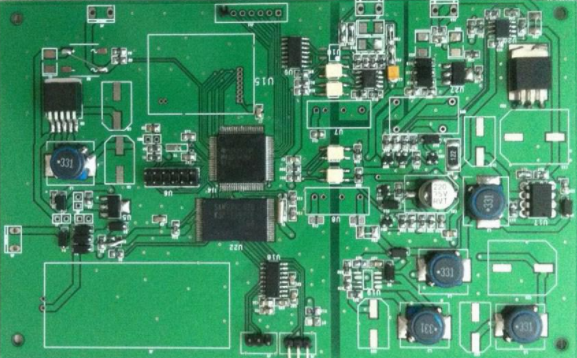The following is mainly about the process control of the solder paste printing process of smt chip processing:
1. Uniformity and size of solder paste particles
The particle shape, diameter and uniformity of solder paste also affect its PCB printing performance. Recently, there are a lot of researches on the printing characteristics of 3#, 4#, 5# solder paste issued by 01005 devices in the industry. I think a certain For solder particles similar to solder paste, the diameter of the largest particle in the model range is about or slightly less than 1/5 of the opening size of the template, and then a screen with appropriate thickness and process perforation can achieve the desired printing effect. Generally, fine-grained solder paste will have better solder paste print definition, but it is prone to sag, and the degree of oxidation and the chance of being high are also high. Generally, the pin pitch is one of the important selection factors, while taking into account performance and price.
Many companies are now considering the design specifications of the 01005 component pads, but the first thing is to evaluate the impact of the corresponding design of the screen opening and the selected solder paste particles on the printing quality.
2. Tackiness of solder paste

The viscosity of the solder paste is not enough, and the solder paste will not roll on the template during PCB printing. The direct consequence is that the solder paste cannot completely fill the opening of the template, resulting in insufficient solder paste deposition. If the viscosity of the solder paste is too high, the solder paste will hang on the wall of the template hole and cannot be completely printed on the pad.
The viscosity selection of solder paste generally requires its self-adhesive ability to be greater than its adhesion to the template, and its adhesion to the template hole wall is less than its adhesion to the PCB pad.
Three, the metal content of the solder paste
The content of metal in the solder paste determines the thickness of the solder after soldering. As the percentage of metal content increases, the thickness of the solder also increases. But at a given viscosity, as the metal content increases, the bridging tendency of the solder increases accordingly.
After reflow soldering, the device pins are required to be soldered firmly, the solder volume is full, smooth, and there is a 1/3 to 2/3 height climb in the height direction of the device (resistance container) end. In order to meet the requirements for the amount of solder paste in the solder joints, a solder paste with a metal content of 85% to 92% is usually used. Solder paste manufacturers generally control the metal content at 89% or 90%, and the use effect is better.
Fourth, the viscosity of solder paste (Viscosity)
The viscosity of the solder paste is the most important factor affecting the printing performance. If the viscosity is too large, the solder paste cannot easily pass through the openings of the template, the printed lines are incomplete, the viscosity is too low, and it is easy to flow and collapse.
The viscosity of solder paste can be measured with an accurate viscometer. In actual work, what if the company purchases imported products?
1. In the process of returning to room temperature from 0 degree Celsius, the sealing and time must be guaranteed;
2. It is better to use a special stirrer for mixing;
3. The production volume is small, and the solder paste is repeatedly used. It is necessary to formulate strict specifications. The use of solder paste outside the specifications must be strictly stopped.
Solder paste printing is a highly manufacturable process, which involves many process parameters, and improper adjustment of each parameter will have a great impact on the quality of PCB mounting products.